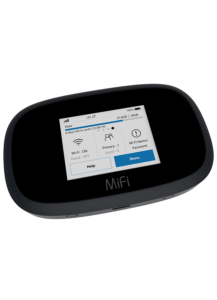
The MiFi 8000 Jetpack by Inseego was released in June 2019 (our news story), originally released for Sprint but then repurposed for AT&T's network for a short while in 2021.
In 2020, Sprint merged with T-Mobile, slowly decommissioning the Sprint brand. And this device does not support T-Mobile's Band 71 which will become more and more important for Sprint based plans that roam onto T-Mobile.
The 8000 is a major advancement in terms of raw cellular capability when compared to previous Sprint mobile hotspots. For the first time, gigabit LTE technologies are included in a hotspot Sprint's lineup. Compared to AT&T's flagship LTE device the Netgear Nighthawk, the MiFi 8000 is a slightly higher category of modem but lacks and Ethernet port for local area networking - but is more affordable.
The 8000 is almost identical to the Verizon flagship mobile hotspot, the Jetpack 8800L - the only difference being the supported LTE frequency bands.
Since the two hotspots are so similar, anyone considering the Sprint MiFi 8000 should also be sure to full read our in-depth review of the Verizon Jetpack 8800L.
Specifications
- Model Number: Inseego MiFi 8000
- # of Connected Devices: 15 Wi-Fi / Supports USB Tethering
- Control Panel and Default Password:
- Control Panel: http://192.168.1.1 or http://my.MiFi8000/
- Default Admin Password: Random - Check Device Screen
- USB Tethering Support:
- WiFiRanger Tethering: Not tested, but works great in the Verizon version
- Pepwave Tethering: Not tested, but works great in the Verizon version (except for Surf On-The-Go)
- Networks supported:
- 4G/LTE: 1, 2, 3, 4, 5, 7, 8, 12, 13, 14, 17, 20, 25, 26, 28, 29, 30, 38, 40, 41, 46, 48, 66
- Future LTE Bands (with a software update): 18, 19, 39, 42
- 3G: HSPA+ 850/1900/2100MHz
- 2G: GSM EDGE
- LTE-Advanced Carrier Aggregation: Yes, 5-band, including LAA
- MIMO Support: 4X4 internal, and 2X2 external
- LTE Performance Category: Category 18 (Max Theoretical Speed: 1200Mbps Down / 150Mbps Up)
- Cellular Antenna Ports:
- 2x TS9 'Test Ports' (not official antenna ports), overrides internal 4x4 MIMO antennas
- Right port is the primary port, for uploads.
- Other Ports: USB-C
- Wi-Fi Technology / Frequencies: 802.11 b/g/n/a/ac - Simultaneous 2.4GHz and 5GHz
- Battery: 4400 mAh
- Claimed Battery Life: 24 hours hotspot usage, multiple days standby
- Can Be Powered Without a Battery: No
- Battery Part #:40123117
- Battery Purchase
- Dimensions: 4.5" x 2.8" x 0.75" / 5.71 oz
- SIM Card Type: Nano
- Retail Price: $240 - Sprint | $179.99 - AT&T
News, Videos, & Status
Inseego has sent us a review unit locked to Sprint's network - which prevented us from testing the MiFi 8000 head-to-head with other AT&T or Verizon hotspots. We also have unit in from Calyx Institute that was included with a prior version of their unlimited plan.
We have, however, extensively reviewed the Verizon hotspot which is almost identical - the Jetpack 8800L. Please see our Verizon 8800L review for the full details.
News Stories:
Alternatives to Consider
For other popular mobile hotspots on the market - here are our featured options:
This Review Contains Additional Member Exclusive Content!
We are Honored to be Member Funded! No ads, no sponsors, no selling (but may contain affiliate links)
Our members fund our in-depth independent reviews.
This entry may contain additional member exclusive content such as testing notes, field testing data, user interface tours, comparisons to alternatives, analysis, tips, videos and discounts.
Members also get interactive guidance, alerts, classroom and more.
Other Ways to Support Our Work At MIRC
Purchasing Options
Purchasing Links & Disclaimer
We don't sell stuff, we are primarily member funded. Some links below may be affiliate links (see our disclaimer), which also helps fund MIRC.
The vendors displayed below provide larger discounts to our MIAs that we have negotiated instead of displaying affiliate links while they are logged in.
MIA Discounts - Learn & Save!
Our Mobile Internet Aficionados (MIA) get special discounts from the below vendors. Members please check for discount codes before ordering. With savings up to 11% off, you could save more than your membership cost!
- Sprint Direct (may only be available for current Sprint customers)
- AT&T Business | AT&T Consumer
Mobile hotspot devices are small, self-contained units that receive a cellular data signal and transform it into an internet connection. They are a cellular modem and router combined. Most can create their own personal Wi-Fi network.
They are typically designed with a specific cellular carrier in mind and require a suitable cellular data plan of their own to operate. You might see them called Jetpacks (Verizon's term for them) or MiFi (Inseego's name for them).
Here's a quick video going over the features of a hotspot, and what makes one better than another:
The guides below have been hand-picked to help further your education about selecting mobile hotspots and best utilizing them in your mobile internet setup.
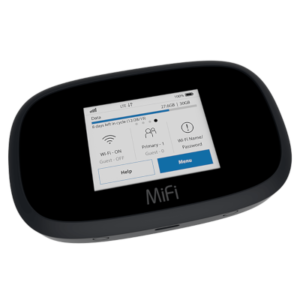

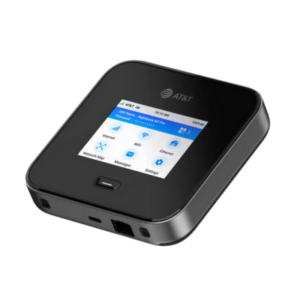
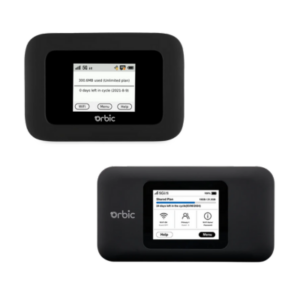
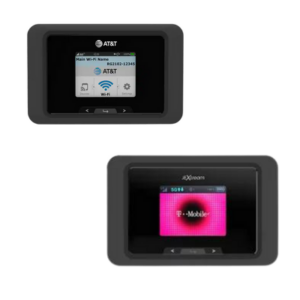
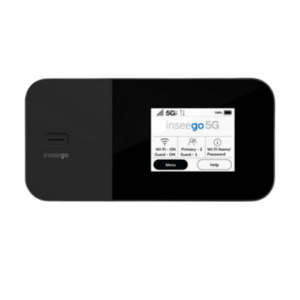
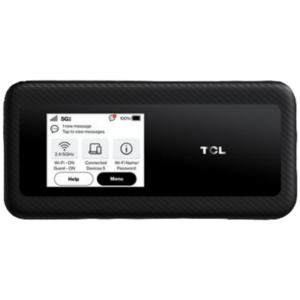
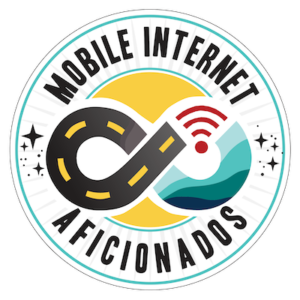


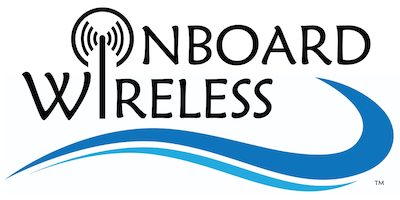






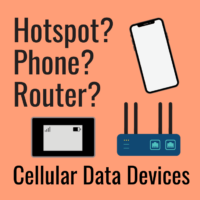
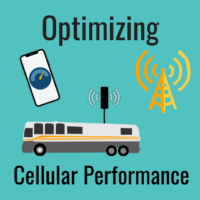
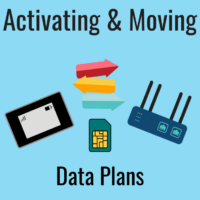
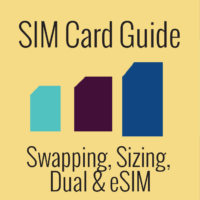
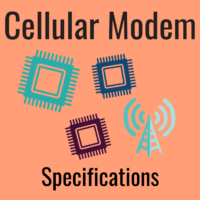




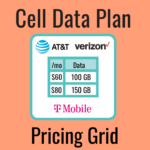

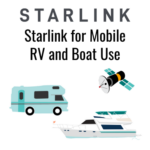
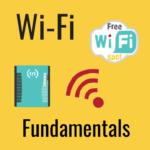
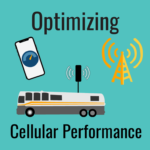
 Mobile Internet Resource Center (dba Two Steps Beyond LLC) is founded by Chris & Cherie of
Mobile Internet Resource Center (dba Two Steps Beyond LLC) is founded by Chris & Cherie of